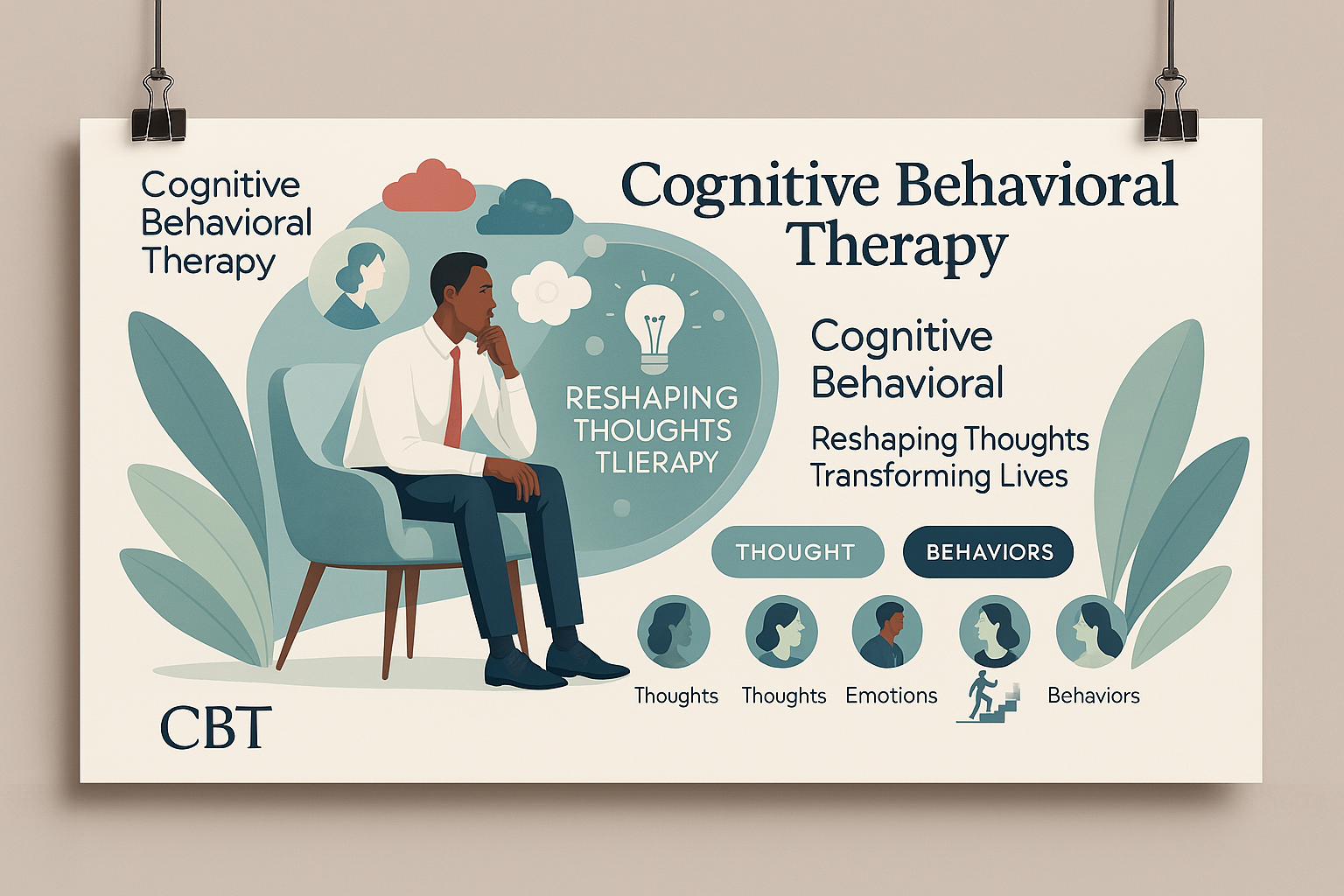Cognitive Behavioral Therapy (CBT)
A Guide to Understanding and Benefits
Cognitive Behavioral Therapy (CBT) is one of the most widely used and effective forms of psychotherapy. It focuses on the connection between thoughts, feelings, and behaviors, helping individuals identify and change unhelpful patterns that contribute to emotional distress and problematic behaviors. Developed in the 1960s by Dr. Aaron Beck, CBT has become a cornerstone in the treatment of various mental health conditions, offering evidence-based techniques to promote lasting change.
What is CBT?
CBT is a structured, time-limited therapy that focuses on present issues rather than delving extensively into past experiences. The central idea is that our thoughts influence our emotions and behaviors. By identifying and challenging distorted or unhelpful thinking patterns, individuals can develop healthier ways of responding to life’s challenges.
For example:
•Thought: “I’m going to fail this presentation.”
•Emotion: Anxiety or dread.
•Behavior: Avoiding preparation or canceling the presentation.
CBT aims to intervene at the thought or behavior level, replacing unhelpful thoughts with more realistic ones (e.g., “I’ve prepared well; I can do this”) and encouraging constructive actions.
Key Principles of CBT
1.Identifying Negative Thought Patterns:
•Unhelpful thoughts often distort reality (e.g., catastrophizing, black-and-white thinking). CBT helps individuals recognize and label these distortions.
2.Challenging and Reframing Thoughts:
•CBT encourages questioning the accuracy of negative thoughts and replacing them with balanced, evidence-based ones.
3.Behavioral Activation:
•Individuals are encouraged to engage in activities that bring joy or accomplishment, counteracting patterns of avoidance or withdrawal.
4.Skill Building:
•Techniques such as problem-solving, relaxation, and mindfulness are introduced to manage stress and improve resilience.
What Conditions Can CBT Help?
CBT has been proven effective for a wide range of mental health issues, including:
•Anxiety Disorders: Social anxiety, generalized anxiety, panic disorder, phobias.
•Depression: Improving mood and addressing negative self-talk.
•PTSD: Managing intrusive thoughts and reducing avoidance behaviors.
•OCD: Challenging obsessive thoughts and reducing compulsive actions.
•Addiction: Identifying triggers and developing healthier coping mechanisms.
•Eating Disorders: Addressing distorted beliefs about food and body image.
It’s also helpful for managing stress, sleep problems, and chronic pain.
How CBT Works in Practice
CBT is typically conducted in weekly sessions lasting 45–60 minutes. A therapist and client work collaboratively to set goals and identify specific challenges. Here’s what a typical process might look like:
1.Assessment and Goal Setting:
•The therapist gathers information about the client’s thoughts, feelings, and behaviors to understand their struggles and set treatment goals.
2.Thought Records:
•Clients may be asked to keep track of situations that trigger negative thoughts, the emotions associated with those thoughts, and alternative, more constructive perspectives.
3.Behavioral Experiments:
•Clients test out new ways of responding to situations (e.g., speaking up in a meeting) to challenge fears and build confidence.
4.Homework Assignments:
•Activities like journaling, practicing relaxation techniques, or trying out new behaviors are often assigned to reinforce skills learned in sessions.
Benefits of CBT
1.Practical and Solution-Oriented:
•CBT equips individuals with tools they can use long after therapy ends.
2.Evidence-Based:
•Research shows CBT is highly effective for many conditions, often achieving results in a relatively short time.
3.Improves Self-Awareness:
•Clients gain a deeper understanding of how their thoughts influence their feelings and actions.
4.Promotes Long-Term Change:
•By addressing the root causes of distress, CBT fosters sustainable mental health improvements.
Challenges and Limitations
While CBT is highly effective, it requires active participation and effort. Some individuals may initially find it difficult to challenge deeply ingrained beliefs or engage with homework assignments. For those with complex or long-standing issues, CBT may need to be combined with other therapeutic approaches.
How to Get Started with CBT
If you’re interested in CBT, the first step is finding a licensed therapist trained in this approach. Many therapists offer in-person or online sessions, making it accessible for most people. Self-help resources, such as CBT workbooks and apps, can also complement therapy or serve as a starting point.
Overview
Cognitive Behavioral Therapy is a powerful tool for addressing emotional and behavioral challenges, offering a structured and empowering path to healing and growth. By helping individuals reshape their thoughts and behaviors, CBT fosters resilience, self-awareness, and a greater sense of control over life’s challenges. Whether you’re dealing with anxiety, depression, or stress, CBT can be a transformative step toward a healthier and more fulfilling life.


